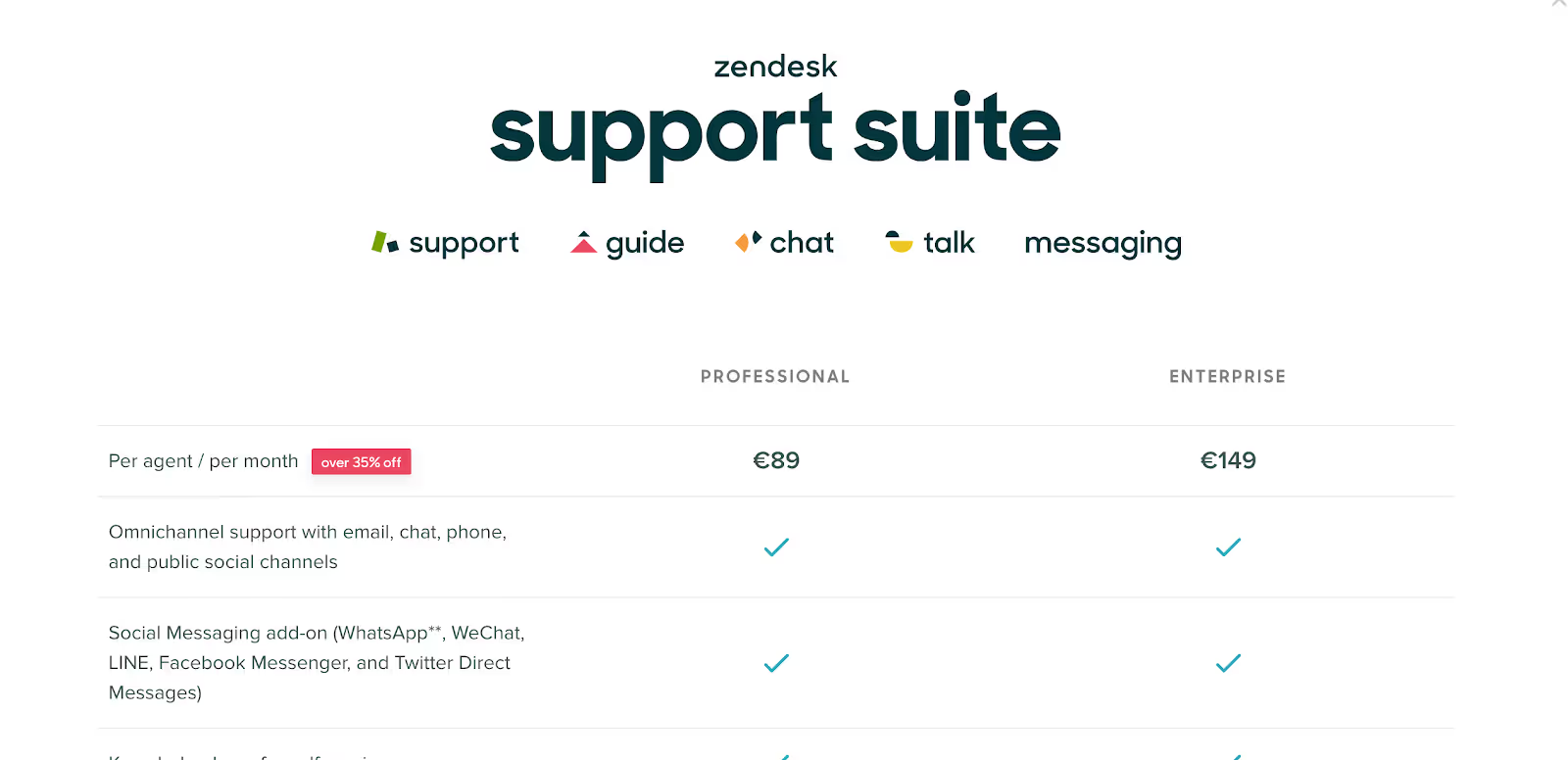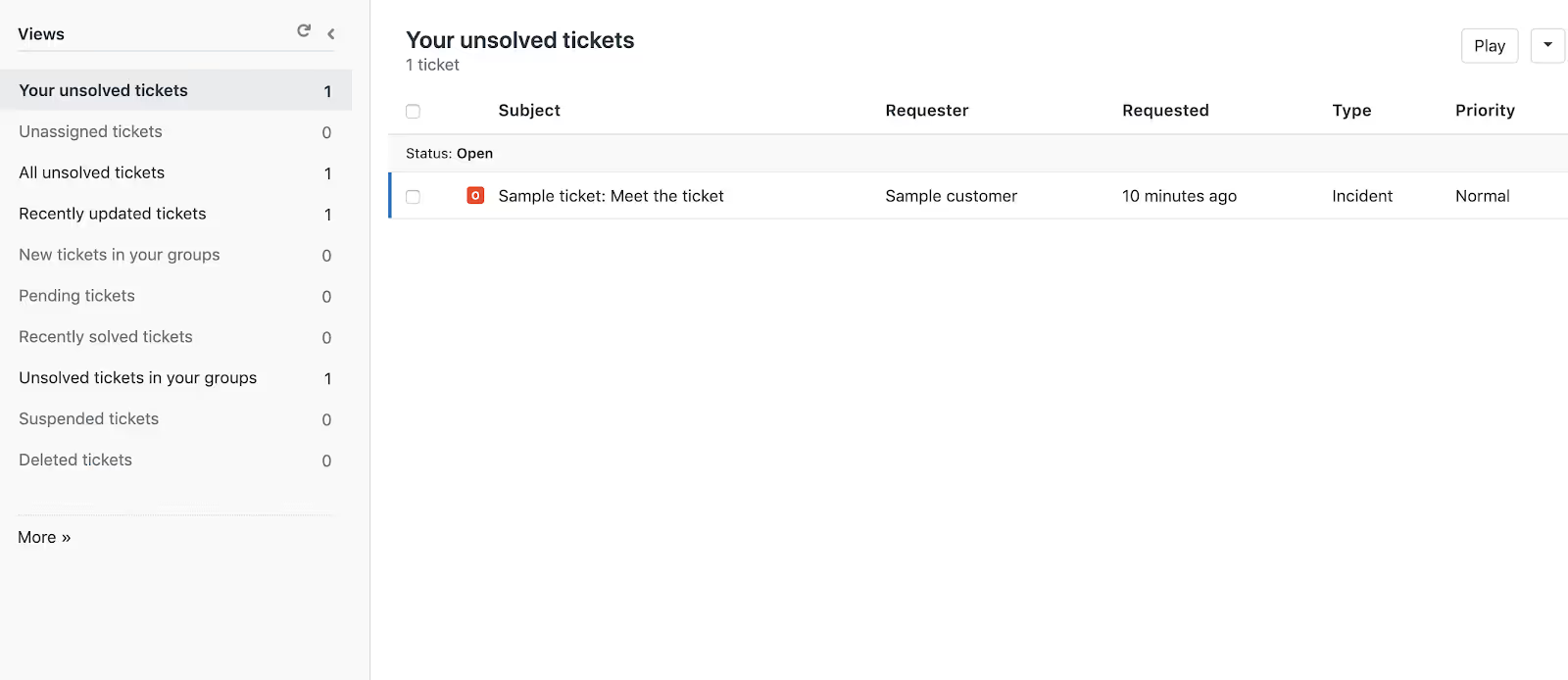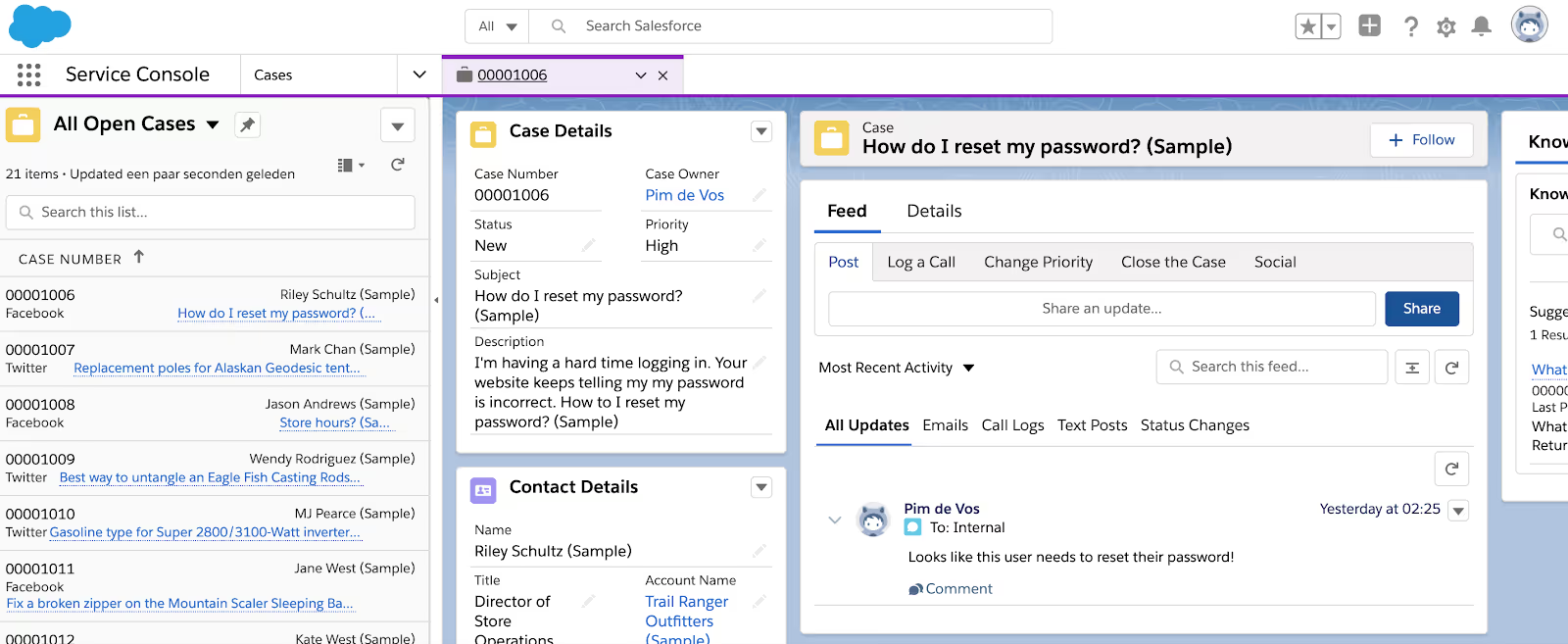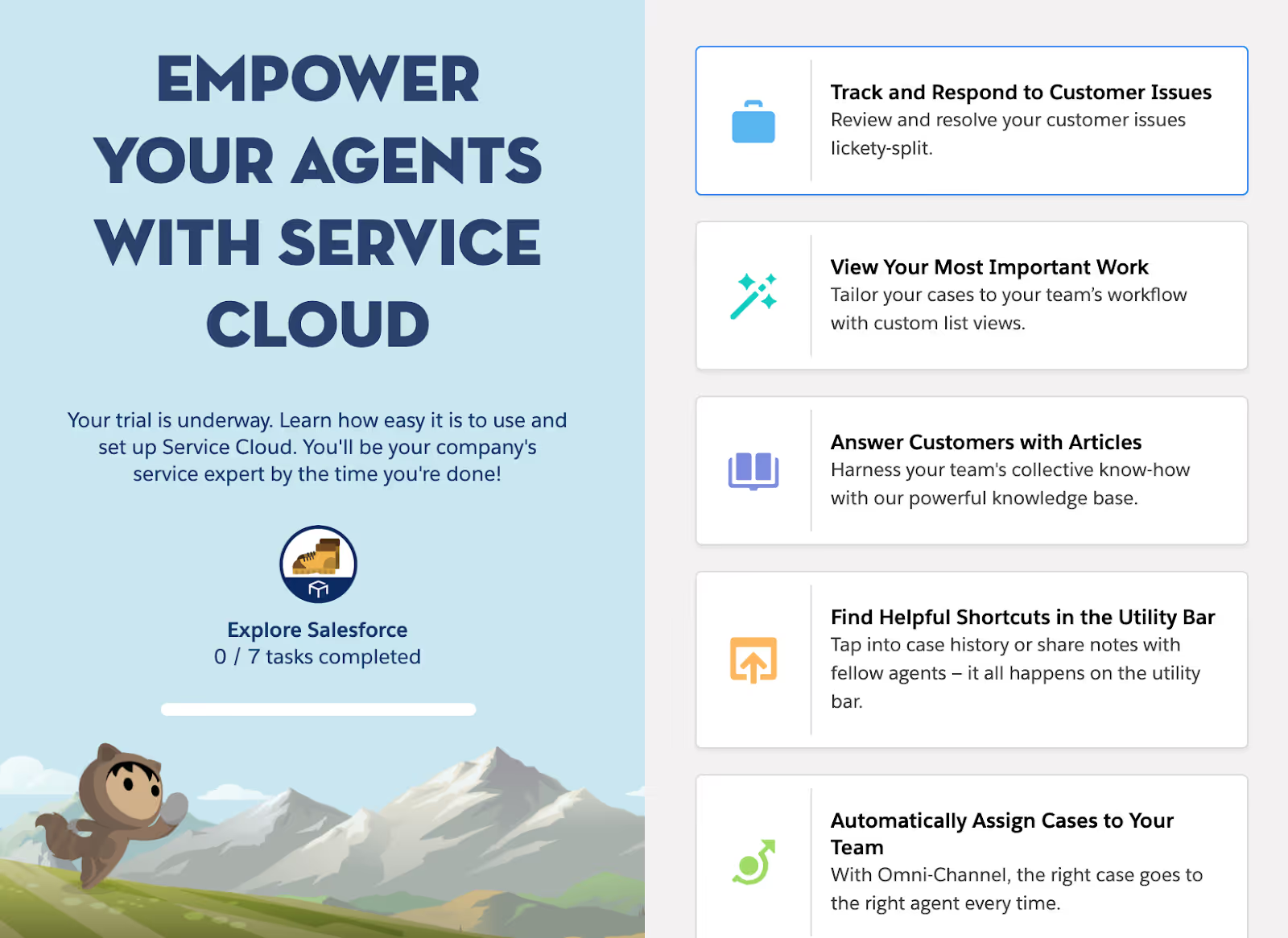Zendesk vs Salesforce is the battle between two of the biggest juggernauts in customer communication software.
To make the best possible comparison between these two companies, I used as many sources as I could find. I tested both Zendesk and Salesforce myself, read extensive articles about the companies, checked out a couple of other comparisons, and spoke to professionals who had experience with either of the two.
Besides that, I read an interesting thread on Quora, where, amongst other experts, old employees gave some useful insights into the comparison between the two software solutions.
Now, if you came here for a quick answer on which of the two is better, I have bad news. It’s not that easy. There is no obvious winner. So much relies on your own situation.
But still, if you have been doubting about which software to work with, I pinky promise you will know exactly how to make the right decision after reading this article.
Let’s dive in, shall we?
Zendesk vs Salesforce: which fits your organization best?
Zendesk is easier to set up and works more intuitively than Salesforce. Besides that, it is better suited as a customer service and support ticketing software. Salesforce, on the other hand, is great if you want to get a 360-degree profile on your customer. This is because you can easily connect it with Salesforce’s sales and marketing software. It’s therefore ideal as a CRM system.
Both software solutions undoubtedly have great features. But they also have their downsides, especially for smaller businesses. On the one hand, they are both expensive and their pricing plans are a bit hazy. On the other hand, one of the tools isn’t as user-friendly. We’ll discuss that later.
In some cases, you may be looking for an easier-to-implement, user-friendly, and less costly solution such as Trengo. It is a shared team inbox, in which your team can easily collaborate on communication via multiple channels; email, phone, WhatsApp, Facebook Messenger, live chat, and more. You can automate a huge part of the workflow, create your own help center, and use chatbots and flowbots.
Zendesk vs Salesforce key features
Let’s start off with a short summary of both software solutions.
Zendesk is support software for teams. All your customer interactions via any channel are collected in one overview. Here, your team can collaborate efficiently on offering customer support.
Salesforce Service Cloud, also called the Salesforce ticketing system, is a customer service solution by the company Salesforce. It is highly customizable and can offer a 360-degree view of your customers. That is, if you also use their software for your sales and marketing efforts.
Zendesk features
In Zendesk Suite, you will get multiple tools: support, guide, chat and talk.
Support is the helpdesk feature. Your ticketing system. Here you can set up your email and add agents to the tool.
Guide is the help center tool. You can brand the help center with your company colors and logo. Next, you can very easily add articles in a clean text editor. Zendesk also offers the answer bot, which can suggest your help center articles to customers. Cool stuff.
The Chat tool is pretty straightforward but looks a little outdated, as you can see in the image below.

Besides that, you have to navigate from your tickets to the chat. This is an extra step that seems simple, and it is. Sure. But where you run a busy business with a lot of customer contact, you want to work as efficiently as possible. Details matter.
With Talk, you can have phone conversations through your dashboard.
What I like most about Zendesk is that every tool has its own tab and its own accompanying first steps that you can take to get accustomed to the software. Besides that, it is straightforward. There are no distractions. The overview is clear and there are multiple features that make collaborating on customer communication easy.
Salesforce Service Cloud features
In Service Cloud, there are no tickets, but ‘cases’. A timeline shows you all the customer contact points with a specific customer and automatically routes a conversation to the best-equipped support employee.
One of their biggest USP’s is the ability to connect the Service Cloud data to their other Salesforce products: marketing and sales. This gives you a 360-degree view of the customer profile. The software also integrates with over 5000 apps and extensions, which is more than Zendesk.
What I like most about Salesforce, is the fact that it gives you a broader perspective of the entire customer journey. By also using their sales and marketing software, and integrating the bunch, you can watch a customer go from A to Z and act accordingly. Especially for big companies, this can be very valuable. For smaller companies, you would probably prefer a more simplistic solution.
Zendesk vs Salesforce: which has the best pricing plans?
Before getting into pricing, I have to compliment both companies for offering a free trial. I personally don’t buy any software that doesn’t offer a free trial. Too much of a risk. This seems logical for many, but there are enough comparable companies out there that don’t offer free trials at all.
Zendesk pricing
Zendesks’ pricing page can be a bit overwhelming at first. It was definitely the case for me. They offer three different Support Software solutions, all with their own pricing plans.
You first have to decide what type of customer support software you are looking for. If you pick the support plan, your options will be pretty limited. Even for smaller businesses. This plan doesn’t include live chat, social messaging, Voice, or SMS. Also, you need Support Suite to offer your customer self-service options such as a help center.

My advice would be to at least go for Support Suite, for the simple fact that the Support plan is not complete enough for most modern companies. Social messaging, Voice, and knowledge bases are super valuable support sources that you simply need. WhatsApp and Facebook Messenger, amongst others, are way too important as support channels in 2020.
Besides that, the pricing plan is a lot more comprehensible here. There are only two options to choose from, as you can see in the image below.

At Zendesk, no matter which subscription plan you decide upon, you pay per agent/per month. This means that if your team consists of, say, 10 members, you will pay €890 per month.
There is quite a big pricing difference between Professional and Enterprise. With Enterprise, you get a couple of valuable extra’s, such as 24/7 support, the ability to brand your chat widget, and giving users roles and permissions. Especially the last feature strikes me as one that every team would need. However, at Zendesk they choose to charge extra.
There’s also good news here, though: Zendesk recently cheapened their prices. As you can see in the image above, it also makes note of this in their pricing plan (“over 35% off”).
Salesforce Service Cloud pricing
At first, the Salesforce pricing plans seem to be a bit more concise. But when you try to figure out the differences between the four, it gets a little tricky.

As you can see, there are four different plans: Essentials, Professional, Enterprise, and Unlimited. Just like with Zendesk, you get charged a price per user, per month. However, you have to sign up for a year in case you go for anything higher than Essentials.
Unlike Zendesk, Salesforce offers all channels in their cheapest plan. You can also make your own help center with this plan so that your customers and agents can quickly find answers to frequently asked questions.
But just as with Zendesk, you need a more expensive plan to assign roles to your software users. If you ask me, this basic functionality pretty much forces you to go for the more expensive version. How else would you manage a support team effectively?
Also, you don’t get 24/7 support, but support with 2-days response time. If you have ever tried to integrate new software, you know how much of a headache that can be.
How do Zendesk and Salesforce compare when it comes to pricing?
As I stated earlier, it really comes down to what you need from your software. But if we have to make a comparison, Zendesk’s Enterprise plan looks quite a lot like Salesforce’s Enterprise plan. But I advise you to really look closely at each plan, and which features really matter to you.
Overall look and user-friendliness
For me, the overall look and user-friendliness are extremely important in this battle between Zendesk and Salesforce.
I’m sure your developers understand the software. Great. But they will not be using it on a regular basis, right? Your agents will. And you don’t want to spend weeks training every single new employee. You need a system that works and can be adapted to easily. What you need is a software tool that works intuitively and simply makes collaborating easy and efficient.
I must admit, this part of the article will be a bit subjective. I advise you to try both software solutions out for yourself and make up your own mind. To each his own, right?
Zendesk
In order to not make this too subjective, I decided to also look for other opinions on this subject. In the earlier mentioned Quora topic, many users stated that Zendesk is easier to use and implement.
After trying both myself, I must say I have to agree.
When entering my Zendesk trial, there is no feeling of overwhelm, which is something that a lot of software tools fail at. You get an overview of the next steps you have to take in your process, and can quickly browse through the tabs on the left.

I also like how clean the ticketing tab is. It is simple, straight to the point, and it would require little effort for new support team members to pick up. This is the most important part, simply because this is where users would spend the most time.

Zendesk heavily advertises the fact that their tool is easy to use and that setting it up requires little time and effort. From what I have experienced, especially when it comes to user-friendliness, they speak nothing but the truth. Kudos.
Salesforce
The Salesforce website and tool looks - sorry to be this frank - a bit outdated.
My first impression of the tool itself was not great either. I honestly felt a little overwhelmed with all of its options. I prefer a user interface that feels more intuitive. If you look at the Salesforce screenshots below, you will quickly see what I mean.

Right? Where do you even start?
I don’t mind figuring out how a tool works, I enjoy nerding out from time to time. However, I do mind spending a lot of time explaining it to other people. And this would likely be the case if I decided to use it with my team.

I must admit, the ‘get started’ button definitely makes things easier. Here, you get a series of tasks that you can complete to get acquainted with the software. The other side of the story is, however, I would have had a really hard time figuring everything out without it. And that’s not a great sign.
If you would really like to use Salesforce because you want to use all of its extensive features, you would probably need a full-time developer. The software comes as a blank slate, which you need to really turn into a fully functioning solution by yourself.
Support
When you start using new software for such a vital part of your business, you want to be sure that the customer support is on a high level, knowledgeable and fast.
I can keep it short here: both Salesforce and Zendesk do it well. Their replies have simply been fast and to-the-point.
Conclusion
To sum it up, we can make a quite clear distinction in the Zendesk vs Salesforce battle. Zendesk is more focused on simple customer support, with an intuitive experience for the user. On the other hand, Salesforce customer Service Cloud can integrate with its sales and marketing software solutions. This can provide you with a lot of valuable information on your customer.
Advantages of using Zendesk
- Great intuitive user experience
- Many features that make collaboration easy
- Up and running without a lot of customization
Advantages of using Salesforce Service Cloud
- Can help you create very insightful 360 profiles of your customers
- Integrates with more apps and extensions than Zendesk
Now, it is completely up to you to decide which of the advantages are most important to your business.
If both of these software tools seem tricky, too extensive, or too expensive, I would recommend trying out Trengo. It has all the necessary features you need for efficient and productive customer communication. You can collaborate on all your channels (email, phone, live chat, WhatsApp, Facebook Messenger, you name it) with a team.
Trengo’s team inbox looks just like a regular inbox, such as Gmail or Outlook, which makes it super user-friendly. Besides that, it is also way more affordable.




.png)











